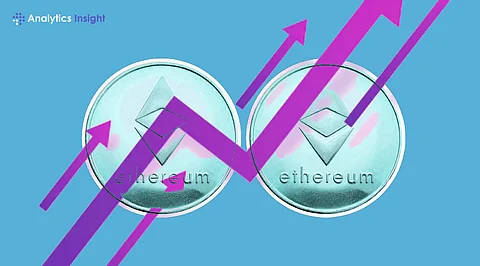

Institutional investors are pouring record-breaking funds into Ethereum, signaling strong long-term confidence.
Regulatory approvals of ETH-based ETFs are making Ethereum more accessible and appealing to traditional finance.
Ethereum’s shift to proof-of-stake and dominance in DeFi highlight its growing utility in the cryptocurrency ecosystem.
Ethereum is quickly becoming the top choice for big investors in the cryptocurrency market. Over the past several months, several key developments have pointed to a strong preference for Ethereum (ETH) over other digital assets like Bitcoin (BTC).
This trend is supported by three major signs: a surge in institutional investment, favorable regulatory support, and Ethereum’s growing importance in the crypto ecosystem. Let’s explore each of these factors in detail.
Recently, Ethereum has seen a large increase in the amount of money flowing in from institutional investors—these are large financial players like hedge funds, asset managers, and corporations. In May 2025, Ethereum recorded its highest weekly investment inflow for the year, with $205 million added in just one week. This kind of movement is a clear sign that major investors believe in Ethereum's long-term potential.
Ethereum’s market price has also shown strength. On May 27, 2025, ETH rose by over 4% to reach around $2,658. This increase was not just due to hype but was supported by higher trading volumes and strong investor demand. Analysts believe that if this momentum continues, Ethereum could soon reach or even pass the $3,500 mark. Another important figure is Ethereum’s "Total Value Locked" (TVL), which measures the amount of money stored in decentralized finance (DeFi) apps built on Ethereum. In the past month alone, the TVL increased by 44%, reaching over $65 billion. This shows that more people are using Ethereum-based applications, which boosts the value and appeal of ETH.
All these indicators show that institutions are now more confident in Ethereum than ever before, and they are making big bets on its future.
One of the biggest hurdles for cryptocurrencies has always been regulation. Many traditional investors avoid digital assets due to unclear rules and the fear of government crackdowns. However, Ethereum has recently received more favorable treatment from regulators, especially in the United States.
Back in 2024, authorities approved Ethereum-based exchange-traded funds (ETFs). These investment products allow investors to buy into Ethereum without needing to hold or manage the cryptocurrency themselves. ETFs are a familiar and easy way for large investors to gain exposure to assets. Since these Ethereum ETFs were approved, they have gained popularity, and large volumes have been bought by major investment firms. This shows growing confidence in Ethereum as a regulated, secure, and legitimate investment.
In 2025, the U.S. Securities and Exchange Commission (SEC) also approved spot Ethereum ETFs. Unlike futures ETFs, which are based on contracts, spot ETFs hold the actual cryptocurrency. This move marked an important step toward bringing Ethereum further into mainstream finance. It also sent a strong message to big investors that Ethereum has official backing and regulatory clarity—something Bitcoin and other cryptocurrencies still struggle with.
Because of these changes, Ethereum is now seen as a safer and more reliable choice for institutions looking to enter the crypto space.
Also Read: ETH Nears $3K, Outpaces All Top 10 Cryptos in Daily Surge
Ethereum is not just a cryptocurrency; it is a powerful platform that supports thousands of applications. Unlike Bitcoin, which mainly serves as digital gold or a store of value, Ethereum can be used for building decentralized applications (dApps). These include finance platforms, games, digital art markets, and more.
One of the biggest changes to Ethereum was the shift from proof-of-work to proof-of-stake. This change means Ethereum now uses less energy and allows holders to earn rewards by staking their ETH. For investors, this is a huge advantage. Holding Ethereum can now generate passive income, much like earning interest from a savings account. This makes ETH more attractive than Bitcoin, which offers no yield.
Moreover, Ethereum is the foundation for a large share of the decentralized finance (DeFi) market and non-fungible token (NFT) space. As these sectors grow, they bring more attention and value to Ethereum. Investors like assets that have strong real-world use cases, and Ethereum delivers that in ways no other blockchain currently can.
This growing importance gives Ethereum a strong position in the market, making it an obvious choice for big investors who want both innovation and long-term value.
Also Read: Crypto Report (April 2025): Bitcoin Surges Over 14%, Ethereum, Solana, and Altcoins Follow Suit.
The growing bias toward Ethereum among big investors is clear. Large capital inflows, regulatory approvals, and the wide range of use cases all point to a future where Ethereum plays a major role in global finance. While Bitcoin still holds the title of the original cryptocurrency and has a strong following, Ethereum is quickly catching up and may soon overtake it in several key areas.
Ethereum is no longer just an alternative to Bitcoin, it is becoming the preferred asset for institutional investors looking for innovation, reliability, and growth. If current trends continue, Ethereum may not only compete with Bitcoin but redefine what it means to lead in the crypto market.
